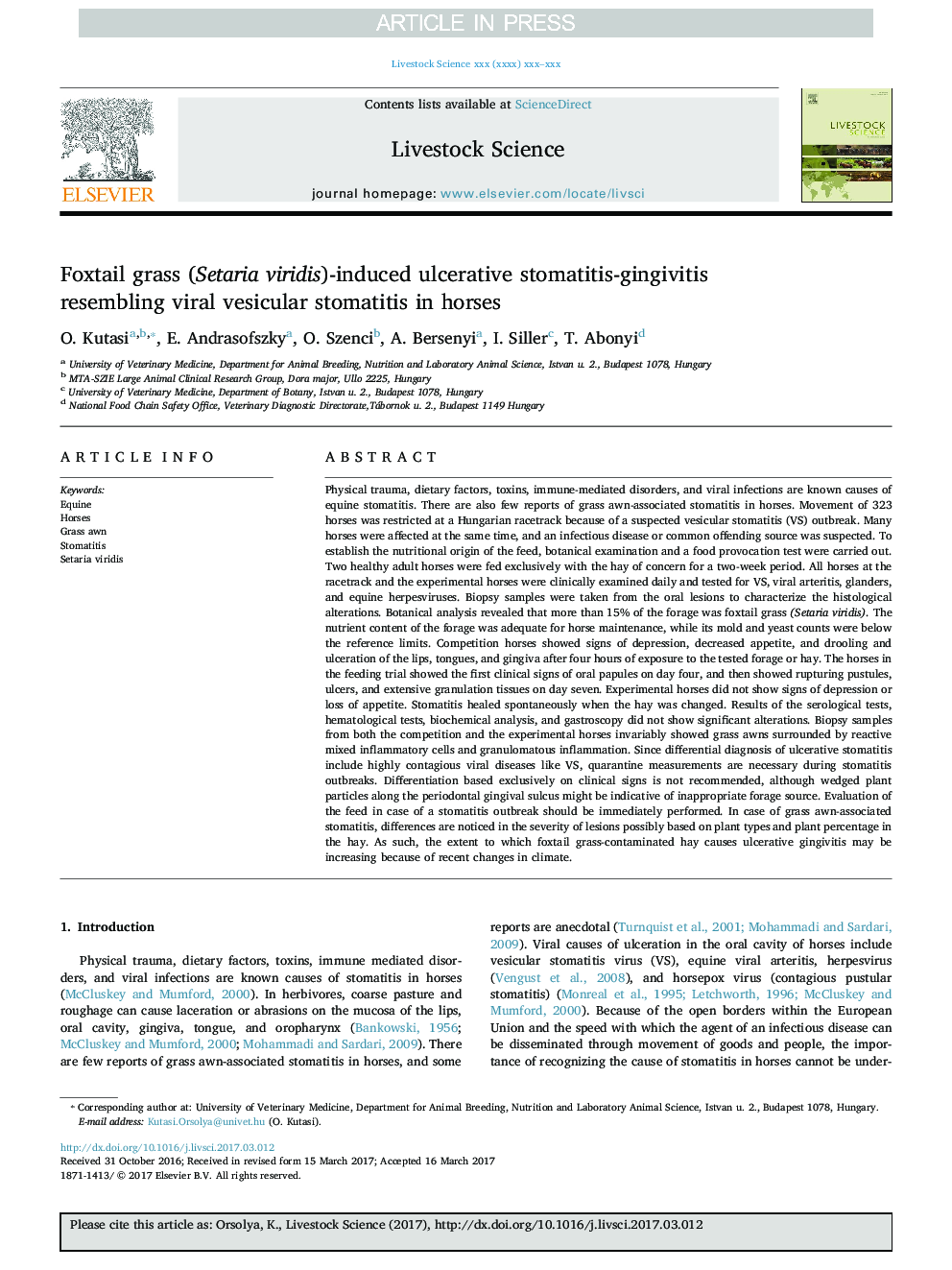| Article ID | Journal | Published Year | Pages | File Type |
|---|---|---|---|---|
| 8950034 | Livestock Science | 2018 | 5 Pages |
Abstract
Physical trauma, dietary factors, toxins, immune-mediated disorders, and viral infections are known causes of equine stomatitis. There are also few reports of grass awn-associated stomatitis in horses. Movement of 323 horses was restricted at a Hungarian racetrack because of a suspected vesicular stomatitis (VS) outbreak. Many horses were affected at the same time, and an infectious disease or common offending source was suspected. To establish the nutritional origin of the feed, botanical examination and a food provocation test were carried out. Two healthy adult horses were fed exclusively with the hay of concern for a two-week period. All horses at the racetrack and the experimental horses were clinically examined daily and tested for VS, viral arteritis, glanders, and equine herpesviruses. Biopsy samples were taken from the oral lesions to characterize the histological alterations. Botanical analysis revealed that more than 15% of the forage was foxtail grass (Setaria viridis). The nutrient content of the forage was adequate for horse maintenance, while its mold and yeast counts were below the reference limits. Competition horses showed signs of depression, decreased appetite, and drooling and ulceration of the lips, tongues, and gingiva after four hours of exposure to the tested forage or hay. The horses in the feeding trial showed the first clinical signs of oral papules on day four, and then showed rupturing pustules, ulcers, and extensive granulation tissues on day seven. Experimental horses did not show signs of depression or loss of appetite. Stomatitis healed spontaneously when the hay was changed. Results of the serological tests, hematological tests, biochemical analysis, and gastroscopy did not show significant alterations. Biopsy samples from both the competition and the experimental horses invariably showed grass awns surrounded by reactive mixed inflammatory cells and granulomatous inflammation. Since differential diagnosis of ulcerative stomatitis include highly contagious viral diseases like VS, quarantine measurements are necessary during stomatitis outbreaks. Differentiation based exclusively on clinical signs is not recommended, although wedged plant particles along the periodontal gingival sulcus might be indicative of inappropriate forage source. Evaluation of the feed in case of a stomatitis outbreak should be immediately performed. In case of grass awn-associated stomatitis, differences are noticed in the severity of lesions possibly based on plant types and plant percentage in the hay. As such, the extent to which foxtail grass-contaminated hay causes ulcerative gingivitis may be increasing because of recent changes in climate.
Keywords
Related Topics
Life Sciences
Agricultural and Biological Sciences
Animal Science and Zoology
Authors
O. Kutasi, E. Andrasofszky, O. Szenci, A. Bersenyi, I. Siller, T. Abonyi,
